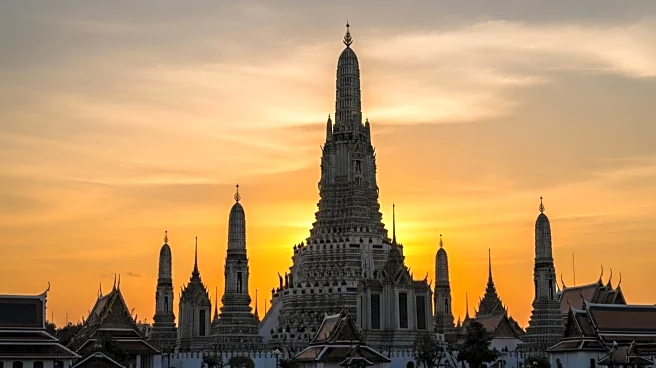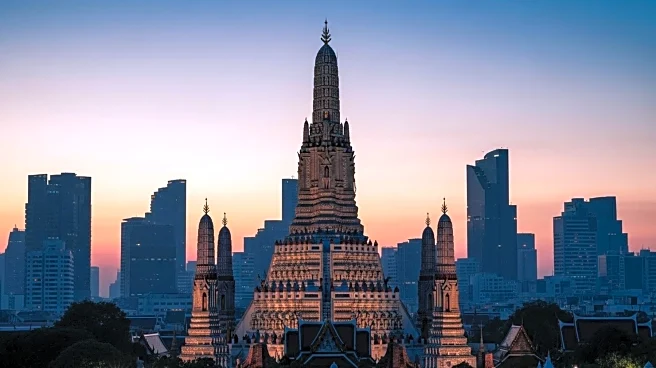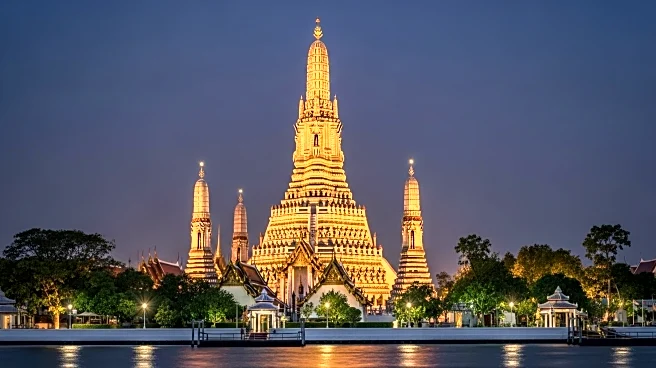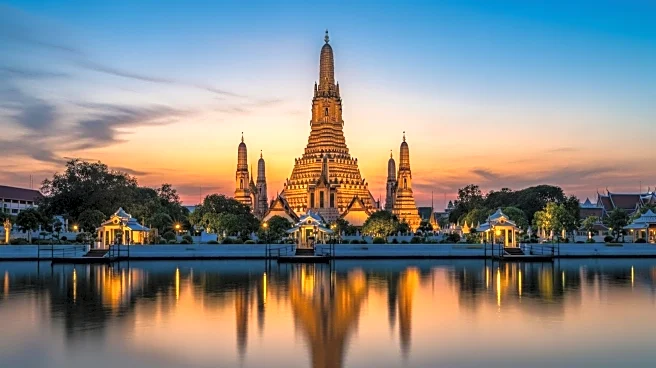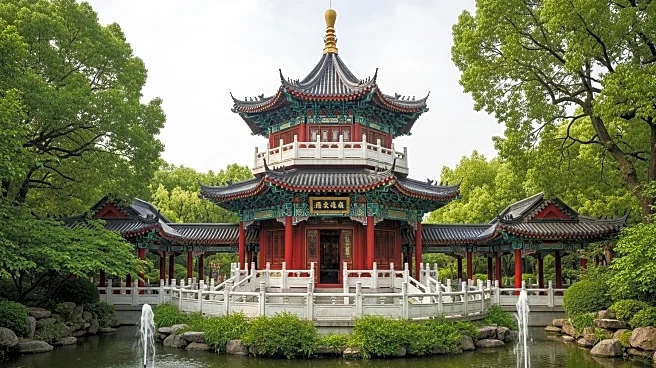Wat Arun, known as the Temple of Dawn, is a prominent Buddhist temple located in Bangkok, Thailand. Situated on the west bank of the Chao Phraya River, it is renowned for its stunning architecture and historical significance. The temple's name is derived from the Hindu god Aruna, symbolizing the dawn, and it has become one of Thailand's most iconic landmarks. Its central prang, a Khmer-style pagoda, is a striking feature that has captivated visitors for centuries.
Scope of Legacy
Wat Arun's legacy is deeply rooted in its architectural grandeur and cultural significance. The temple's central prang, adorned with intricate designs and colorful porcelain, stands as a testament to the artistic achievements of the Ayutthaya period. This architectural marvel not only reflects the religious devotion of its creators but also serves as a symbol of Thailand's rich cultural heritage. The temple's prominence in Bangkok's skyline has made it a focal point for both locals and tourists, ensuring its legacy endures through generations.
Pivotal Contributions
The temple's contributions to Thai culture and history are manifold. Originally constructed during the Ayutthaya period, Wat Arun underwent significant renovations under King Taksin the Great in 1768, marking a pivotal moment in its history. This renovation not only restored the temple's grandeur but also solidified its status as a key religious site in the newly established capital of Thonburi. The temple's role in religious ceremonies and festivals further underscores its importance in Thai society.
Enduring Influence
Wat Arun's influence extends beyond its architectural beauty. As a symbol of the dawn, it represents new beginnings and hope, resonating with visitors from around the world. The temple's presence in cultural and religious narratives has inspired countless artists, writers, and filmmakers, contributing to its enduring influence in both Thai and global contexts. Its depiction in various media has helped to cement its status as a cultural icon.
U.S. Relevance
For U.S. audiences, Wat Arun offers a glimpse into the rich tapestry of Thai culture and history. Its architectural splendor and historical significance provide an opportunity for cultural exchange and understanding. As a popular tourist destination, Wat Arun attracts visitors from the United States, fostering connections between the two nations through shared appreciation of art and history. The temple's role in promoting cultural tourism highlights its relevance to American travelers seeking to explore the diverse heritage of Thailand.
 Discover Daily • 9 min read
Discover Daily • 9 min read 